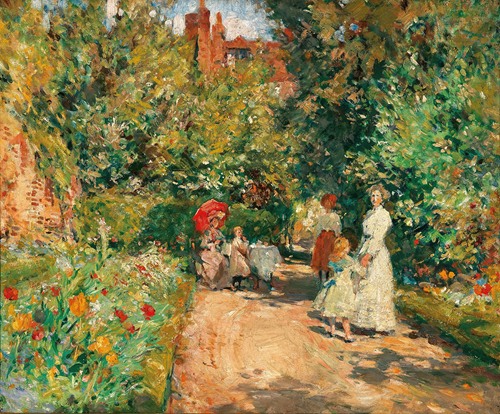William Christian Symons
William Christian Symons was an English decorative designer, and a painter in oil and watercolour.
Symons was the elder son of William Martyn Symons by his wife Elizabeth White. His father, who came originally from Trerice, St. Columb, Cornwall, carried on a printing business in Bridge Street, Vauxhall, where Christian, his second child, was born on 28 November 1845. There was one other son and two daughters. Symons was educated at a private school in Penzance until he was sent at an early age to the Lambeth Art School, then under the direction of the influential educationalist John Charles Lewis Sparkes.
In 1866 he entered the Royal Academy as a student for a short while, gaining that year a silver medal in the antique school. In 1869 for the first time one of his works (a portrait of his sister) was hung at the Academy Exhibition, to which he was an intermittent contributor until the year of his death, when he was represented by an 'Interior of Downside Abbey'. His easel pictures were also shown at the New English Art Club, the Institute of Painters in Oil, and various other galleries. In 1870 he was received into the Roman Catholic church, and began his long connection with the firm of Lavers, Barraud and Westlake, for whom he designed a number of stained windows.
Symons became a member of the Royal Society of British Artists in 1881, but seceded with James McNeill Whistler in 1888. He only came personally before the public in 1899, when he acted as secretary to the celebrated dinner organised in honour of Whistler on 1 May. In 1899 he began the execution of his commission for certain mosaic decorations at Westminster Cathedral, the work by which he was chiefly known until the posthumous exhibition of his paintings and watercolours at the Goupil Gallery in 1912. He worked at Newlyn in Cornwall for some time, and though never a member of the school associated with that locality he contributed an account of it to The Art Journal in April 1890. In later life he lived almost entirely in Sussex. He died at Udimore, near Rye, where he is buried, on 4 September 1911.
